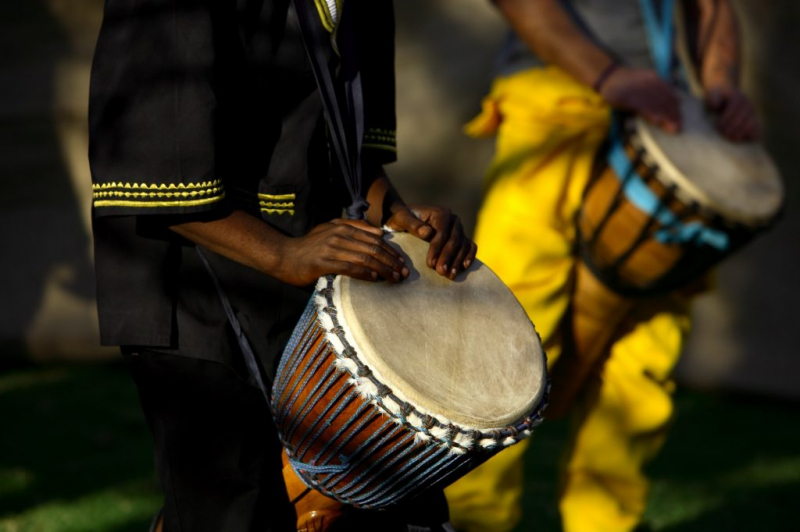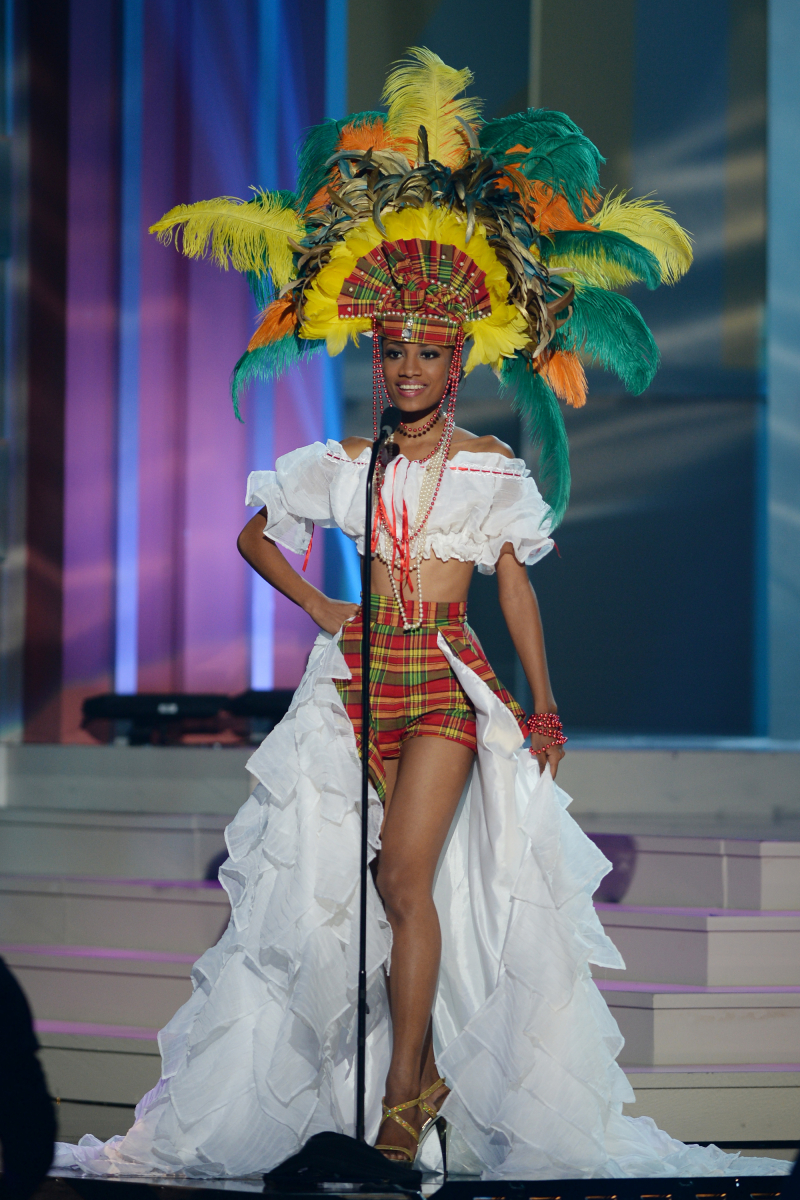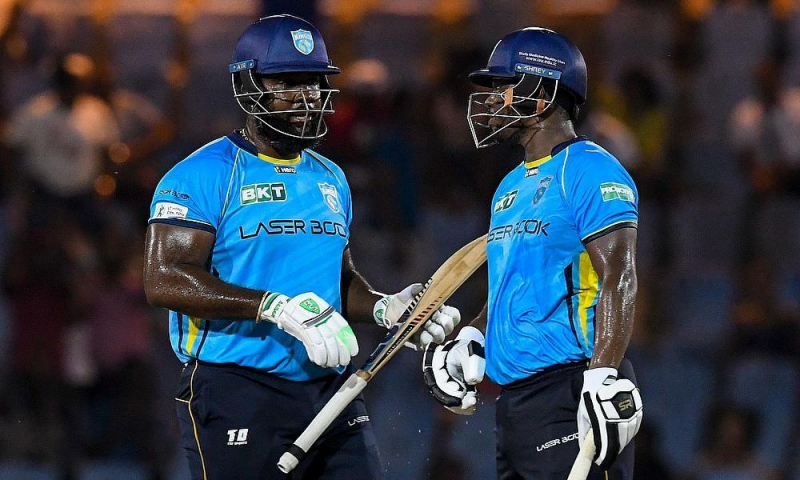Top 8 Unique Cultural Characteristics In Saint Lucia
St. Lucia is a breathtakingly beautiful island in the Eastern Caribbean. While it is now a popular destination for tourists from all over the world, it has a ... read more...rich history dating back to at least 200 AD, when it was known to the Arawak Indians who lived there as Louanalao, or the Island of the Iguanas. Saint Lucia's culture combines influences from its African, French, and English ancestors. The majority of the population is Catholic, but the religious climate is open. St. Lucia is a land steeped in tradition, and for a truly immersive experience, Toplist has the lowdown on the Unique cultural characteristics in Saint Lucia.
-
The French-based Creole widely spoken in Saint Lucia is Saint Lucian Creole French, also known as Patwa. It is the country's vernacular language and is spoken alongside English, the official language. 95% of the population speaks Saint Lucian French Creole.
Kwéyol is an Antillean Creole sub-variety that, like other Caribbean varieties, combines the syntax of African language origins with a vocabulary primarily derived from French. The English language, like its Dominican counterpart, has influenced the vocabulary of the creole. The Carib language has also had a documented syntactical influence.
It is still widely used throughout Saint Lucia. Despite the fact that it is not an official language, the government and media outlets provide information in Kwéyol in addition to English. Antillean Creole is also spoken in Dominica, Martinique, Guadeloupe, and (to a lesser extent) St. Vincent and Grenada; it is also similar to creoles spoken in French Guiana, Haiti, Mauritius, and the Seychelles. Saint Lucia is a member of La Francophonie.

https://www.bbc.co.uk/ 
https://portal.clubrunner.ca/ -
Saint Lucia's Christian population exceeds 90%. Every village in Saint Lucia has a church, and the country observes all Catholic holidays and sacraments. The French have had a significant cultural impact on Saint Lucian society. Saint Lucia's religious authorities adhere to the Catholic clergy system. This can be seen as one of the Unique Cultural Characteristics In Saint Lucia that you should know.
According to the most recent national census, just over 90% of Saint Lucia's population practices Christianity. Furthermore, roughly two-thirds of the Christian population identify as Roman Catholics. The presence of Roman Catholics in Saint Lucia is attributed to the early influence of French colonial settlers and merchants. The remaining Christians are either Protestants, Pentecostals, Evangelicals, Baptists, Anglicans, or Jehovah's Witnesses.
Only 2.3% of Saint Lucians practice a religion other than Christianity. Rastafarianism (1.9%), Hinduism (0.3%), and Islam (0.1%) are practiced by very small sects of the population. 5.9% of residents stated that they have no religion (atheist, agnostic). In addition, 1.4% of the population, whether atheist or not, did not state their religious beliefs on the National Census.
When it comes to religious beliefs and practices, the government of Saint Lucia promotes freedom of choice. Although most holidays and ceremonies are based on Christian beliefs, the government recognizes other significant religious days on the calendar. Saint Lucia is a Caribbean country with few indigenous peoples, which is reflected in the religious beliefs of this small island nation. Both African and European influences are prevalent among the Christian majority.

https://en.wikipedia.org/ 
https://www.santuariodilucia.it/ -
With such a diverse cultural tapestry, the people of St. Lucia always have something wonderful to celebrate. Parades, festivals, and events are a big part of local life, and visitors are welcome to join in the fun and festivities. Saint Lucian cultural festivals include La Rose on 30 August and La Marguerite on 17 October, the first representing a native Saint Lucian fraternal society known as the Order of the Rose, which is fashioned after Rosicrucianism, and the second representing its traditional rival, the native Saint Lucian equivalent of Freemasonry known as the Order of the Marguerite.
The Saint Lucia Jazz Festival is the year's largest festival. It is held in early May at various venues throughout the island and attracts visitors and musicians from all over the world. Pigeon Island, located to the north of the island, hosts the grand finale or main stage.Saint Lucia, like other Caribbean countries, traditionally holds a carnival before Lent. To avoid competing with the much larger Trinidad and Tobago carnival and to attract more overseas visitors, the government moved Carnival to mid-July in 1999. Saint Lucians celebrated the 150th anniversary of West Indian heritage on the island in May 2009.

https://visitsweden.com/ 
https://www.stlucia.org/ -
It is considered as one of the Unique Cultural Characteristics In Saint Lucia. Saint Lucia's music is rich in oral and folk traditions and is based on elements derived from African music, particularly rhythmically, and Western European dances such as the quadrille, polka, and waltz. The banjo and cuatro are iconic Lucian folk instruments, particularly the bwa poye, a four-stringed banjo. Jwé songs are celebratory songs with lyricism and rhythmic complexity. The kwadril is the most important Afro-Lucian Creole folk dance.
Music is an essential component of Lucian folk holidays and celebrations, as well as the friendly rivalry between the La Rose and La Marguerite societies. Saint Lucia has little Western classical music, and the country's popular music industry is in its infancy. There are few recording opportunities, but live music and radio continue to be important parts of Lucian culture. Popular music from other countries, particularly Trinidadian styles such as calypso and soca, is widely available.
Music education has long been a component of primary school education in Lucia. It has recently been introduced to older students, many of whom are now involved in String Orchestras, wind ensembles, steelpan bands, and other musical enrichment opportunities. The Saint Lucia School of Music is a well-known government-aided non-profit music school. The Ministry of Education supports a number of festivals and special events. The prestigious Saint Lucia Jazz Festival and the Creole celebration Jounen Kwéyl are also held on the island.
https://kenwoodtravel.co.uk/ 
https://wyoarts.state.wy.us/ -
If the purpose of art, as it is said, is to appeal to the senses and emotions, then anyone who has experienced the magnificent beauty of Saint Lucia can easily imagine the stimulation the island provides for any form of artistic endeavor. True inspiration for the graphic artist can be found in the amazing array of colors, textures, and feelings displayed by the island and its people.
Art has always been an important part of the island's culture, dating back to the first Amerindians who arrived nearly two millennia ago. Saint Lucia has produced a number of well-known artists, the work of whom can be seen in a variety of locations. Many well-known foreign artists have discovered Saint Luica's beauty and taken up artistic residence to benefit from the island's inspiration.
While Saint Lucian art encompasses a wide range of styles, mediums, and subject matter, certain themes are more prevalent, such as the awe-inspiring Pitons, which are the most painted and photographed site in the entire Caribbean. Galleries are also rich in depictions of the island's flora and fauna, rugged coastal scenery, and the unique and appealing mix of heritages reflected in the attractiveness of the people. Saint Lucia also has a number of well-known wood carving artists whose work can be found in galleries, craft shops, and as decorative elements in many resorts.
https://www.tripadvisor.co.uk/ 
https://www.greenfigresort.com/ -
The Madras, also known as the Jip or Jupe, is Saint Lucia's national dress. The Wob Dwyiet (or Wobe Dwiette), a grand robe worn by the earlier French settlers, inspired the traditional five-piece costume, which is also recognized as the country's national dress. The Madras is the traditional dress of St. Lucian women and girls, and its name comes from the Madras cloth, a fabric used in the costume.
The Madras originated in pre-emancipation St. Lucia, when African slaves on the island would don the colorful dress during feast days. Slaves on the island were forced to wear the livre of the estate to which they belonged beginning in the late 17th century. Typically a single-color, one-piece item that began as a sarong and evolved into a simple tunic with arm and head holes and a simple rope belt.
The Madras is composed of five separate pieces of clothing. The costume consists of a white cotton or poplin blouse, known as a chimiz decolté or chemise decoltee in French Creole, that is finished with Broderie Anglaise and red ribbons. The second item is an ankle-length skirt trimmed with lace and red ribbons, with two gathers at the bottom of the garment. The third item is the costume's shorter outer skirt, which is made of Madras material. The Madras material is used once more in the fourth item, the Tête en l'air or tèt anlè. The final piece is a foulard, a triangular silk scarf pinned to the left shoulder, with the apex at the end of the elbow and tucked into the waist of the skirt.
Today, the Madras is nearly identical to the traditional costumes worn by other former French Caribbean colonies, including the neighboring islands of Martinique, Guadeloupe, and Dominica. During the 25th anniversary of the country's independence in 2004, the St. Lucian government launched a national awareness campaign. Both the Madras and the Wob Dwyiet, both recognized as national symbols, were included in this campaign. This is considered as one of the Unique Cultural Characteristics In Saint Lucia.
https://www.gofugyourself.com/ 
https://virtualexpodubai.com/ -
The most popular sports in Saint Lucia are cricket and football. Darren Sammy was the first and only St Lucian selected for the West Indies Cricket Team. Darren Sammy was the first St Lucian to play Test cricket in the West Indies, and his figures were the second best by a West Indian debutante, trailing only Alf Valentine's eight wickets in 1950. St Lucia hosts games in the West Indies limited-overs and four-day cricket competitions on an annual basis, usually at the Beausejour Cricket Grounds, one of the most modern facilities in the Caribbean.
Tennis is becoming more popular in St Lucia. The island's St Lucian hotel offers two championship junior tournaments. St Lucia also competes in the Davis Cup, an international tennis competition, on an annual basis, with former Sportsman of the Year Vernon Lewis and Kane Easter being two of the island's consistent players over the years.Volleyball experienced a period of expansion in the 1980s, when club rivalries between teams such as Le Club and Ciceron Seagulls fueled interest. St Lucia has won the men's and women's volleyball competitions of the Organisation of Eastern Caribbean States (OECS), including the women's tournament when it was held for the first time at the Beausejour Indoor Facility in 2008. Netball, rugby, swimming, and basketball are all becoming increasingly popular on the island. The Rodney Heights Aquatic Centre is a short-course (25m) swimming pool in the island's north. St Lucia has also won multiple OECS swimming championships.

https://www.stlucia.org/ 
https://www.cricketworld.com/ -
Marriage occurs between consenting adults but is frequently delayed until middle age. Other living or domestic arrangements frequently precede a legal marriage, particularly among the lower classes. These may include "friending," a visiting relationship that frequently results in childbirth and may involve the woman performing domestic services in exchange for a financial contribution on the part of the man. A cohabitational relationship without the benefit of legal marriage is another option. Given the legal legitimacy of marriage, this may eventually be a lasting union; the partners' expectations and the enactment of the relationship parallel those of a legal union. For the middle class, the respectability conferred by a legal union is an important consideration, cohabitational union is usually not an option.
Outside-of-marriage relationships are common among men, who may have "friending" alliances despite being in a cohabiting union. When children are born from such unions, the man is expected to contribute financially to the child's care, but among the poor, these contributions are likely to be meager. Women's opportunities to engage in similar activities outside of a cohabiting union are limited.
https://www.trailfinders.ie/ 
https://www.beachweddings.co.uk/





























